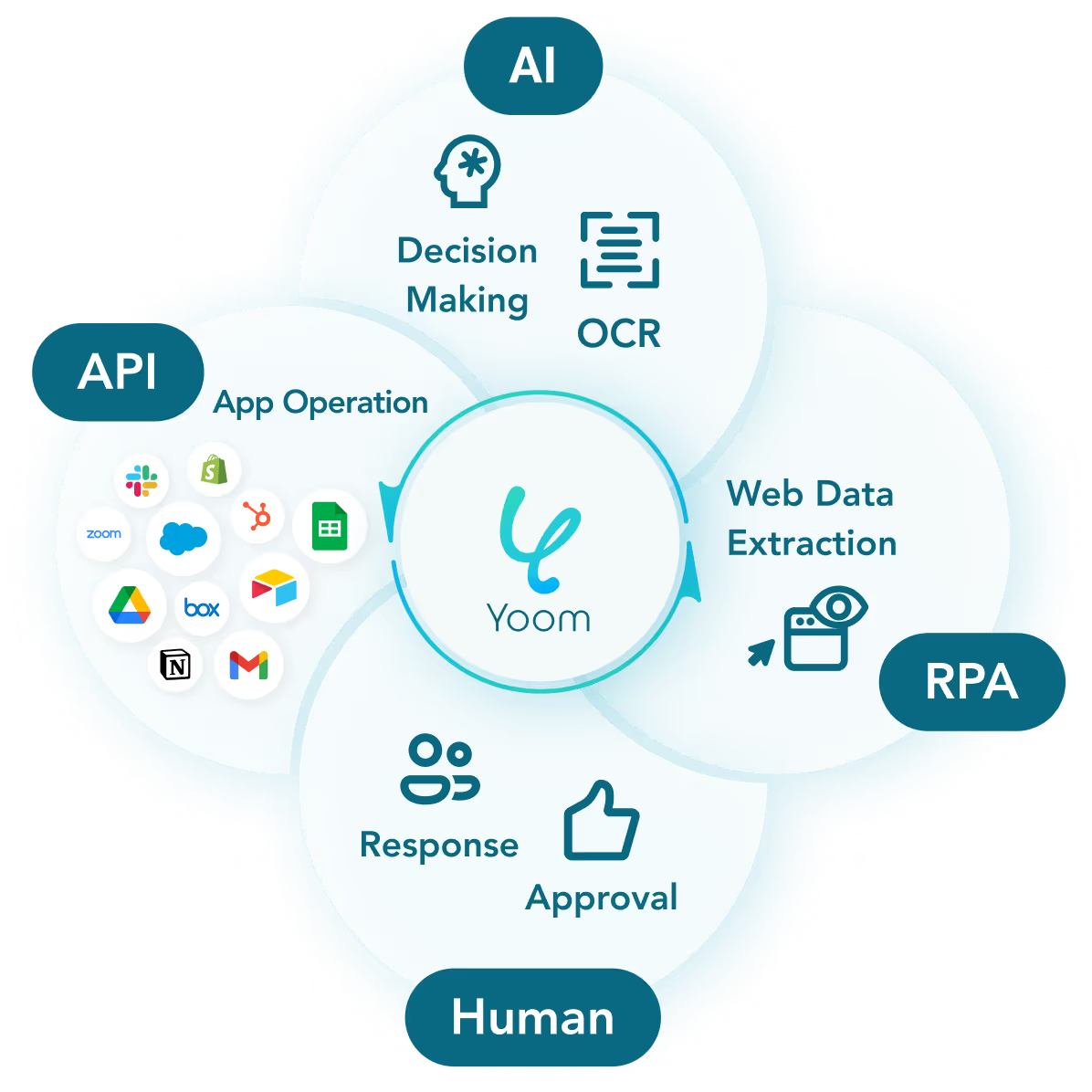
Start free
Functions
Try for free
■Overview
This is a flow where a task is automatically added to Backlog when an Issue is created in GitHub.
You can manage GitHub Issues and Backlog tasks, reducing the hassle of repeatedly adding the same information to multiple tools and minimizing transcription errors.
■Notes
・Please integrate GitHub and Backlog with Yoom.
・Replace the details of the GitHub registration destination with any desired values before use.




 When a new issue is added
When a new issue is added
 When an issue is added or updated
When an issue is added or updated
 When a new project is added
When a new project is added
 Comment on Issue (Webhook)
Comment on Issue (Webhook)
 Add Issue (Webhook)
Add Issue (Webhook)
 Issue Update (Webhook)
Issue Update (Webhook)
 Issue Deletion (Webhook)
Issue Deletion (Webhook)
 When an Issue is Created
When an Issue is Created
 When an Issue is Created or Updated
When an Issue is Created or Updated
 When a Pull Request is created
When a Pull Request is created
 When a Pull Request is created or updated
When a Pull Request is created or updated
 When a comment is created on an Issue or Pull Request
When a comment is created on an Issue or Pull Request
 When an Issue is Closed (Webhook Trigger)
When an Issue is Closed (Webhook Trigger)
 When an Issue is Opened (Webhook Trigger)
When an Issue is Opened (Webhook Trigger)
 When a Webhook is Received (Webhook Trigger)
When a Webhook is Received (Webhook Trigger)
 When an Issue is Opened (Webhook Trigger)
When an Issue is Opened (Webhook Trigger)
 Get List of Issues for a Specific Project
Get List of Issues for a Specific Project
 Add Issue
Add Issue
 Get Issue Information
Get Issue Information
 Update Issue Status
Update Issue Status
 Get List of Types
Get List of Types
 Add Project
Add Project
 Get Project List
Get Project List
 Send Attachment
Send Attachment
 Add Issue Comment
Add Issue Comment
 Attach File to Issue Comment
Attach File to Issue Comment
 Get User List
Get User List
 Get Category List
Get Category List
 Update Issue
Update Issue
 Update Issue Custom Attributes
Update Issue Custom Attributes
 Delete Issue
Delete Issue
 Download Issue Attachment File
Download Issue Attachment File
 Add Issue (Link to Parent Issue)
Add Issue (Link to Parent Issue)
 Add User
Add User
 When a new issue is added
When a new issue is added When an issue is added or updated
When an issue is added or updated When a new project is added
When a new project is added Comment on Issue (Webhook)
Comment on Issue (Webhook) Add Issue (Webhook)
Add Issue (Webhook) Issue Update (Webhook)
Issue Update (Webhook) Issue Deletion (Webhook)
Issue Deletion (Webhook) Get List of Issues for a Specific Project
Get List of Issues for a Specific Project Add Issue
Add Issue Get Issue Information
Get Issue Information Update Issue Status
Update Issue Status Get List of Types
Get List of Types Add Project
Add Project Get Project List
Get Project List Send Attachment
Send Attachment Add Issue Comment
Add Issue Comment Attach File to Issue Comment
Attach File to Issue Comment Get User List
Get User List Get Category List
Get Category List Update Issue
Update Issue Update Issue Custom Attributes
Update Issue Custom Attributes Delete Issue
Delete Issue Download Issue Attachment File
Download Issue Attachment File Add Issue (Link to Parent Issue)
Add Issue (Link to Parent Issue) Add User
Add User Update User
Update User Get User
Get User Delete User
Delete User Search Issues
Search Issues Get List of Priorities
Get List of Priorities Get List of Issue Statuses
Get List of Issue Statuses Get List of Git Repositories
Get List of Git Repositories Get Git Repository Details
Get Git Repository Details When an Issue is Created
When an Issue is Created When an Issue is Created or Updated
When an Issue is Created or Updated When a Pull Request is created
When a Pull Request is created When a Pull Request is created or updated
When a Pull Request is created or updated When a comment is created on an Issue or Pull Request
When a comment is created on an Issue or Pull Request When an Issue is Closed (Webhook Trigger)
When an Issue is Closed (Webhook Trigger) When an Issue is Opened (Webhook Trigger)
When an Issue is Opened (Webhook Trigger) When a Webhook is Received (Webhook Trigger)
When a Webhook is Received (Webhook Trigger) When an Issue is Opened (Webhook Trigger)
When an Issue is Opened (Webhook Trigger) Create Issue
Create Issue Add a collaborator to a repository
Add a collaborator to a repository List Issues
List Issues Retrieve Issue
Retrieve Issue Add Comment to Issue/Pull Request
Add Comment to Issue/Pull Request Update Issue
Update Issue Search Issue and Pull Request
Search Issue and Pull Request Search Users
Search Users Create Pull Request
Create Pull Request Get Pull Request
Get Pull Request Update Pull Request
Update Pull Request Remove User from Repository
Remove User from Repository Search Issue
Search Issue Search Pull Request
Search Pull Request List commits
List commits Create release notes
Create release notes